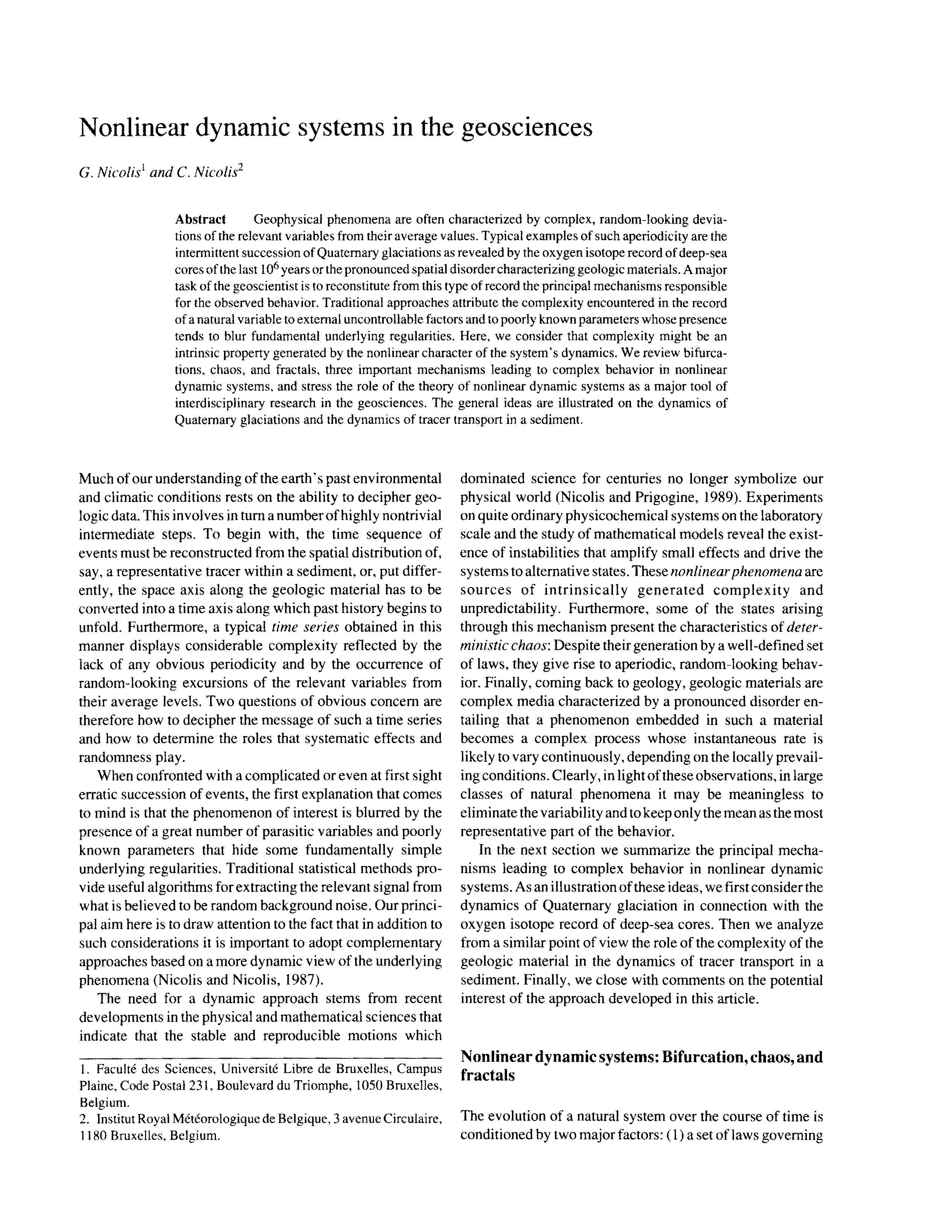Nonlinear dynamic systems in the geosciences
DOI:
https://doi.org/10.17161/kgsbulletin.no.233.20447Abstract
Geophysical phenomena are often characterized by complex, random-looking deviations of the relevant variables from their average values. Typical examples of such aperiodicity are the intermittent succession of Quaternary glaciations as revealed by the oxygen isotope record of deep-sea cores of the last 106 years or the pronounced spatial disorder characterizing geologic materials. A major task of the geoscientist is to reconstitute from this type of record the principal mechanisms responsible for the observed behavior. Traditional approaches attribute the complexity encountered in the record of a natural variable to external uncontrollable factors and to poorly known parameters whose presence tends to blur fundamental underlying regularities. Here, we consider that complexity might be an intrinsic property generated by the nonlinear character of the system's dynamics. We review bifurcations, chaos, and fractals, three important mechanisms leading to complex behavior in nonlinear dynamic systems, and stress the role of the theory of nonlinear dynamic systems as a major tool of interdisciplinary research in the geosciences. The general ideas are illustrated on the dynamics of Quaternary glaciations and the dynamics of tracer transport in a sediment.
Downloads

